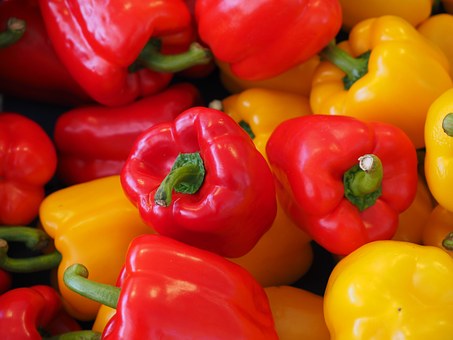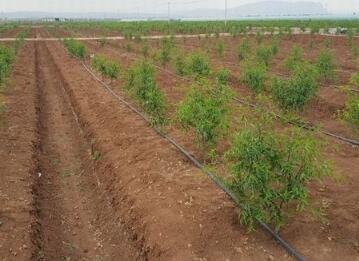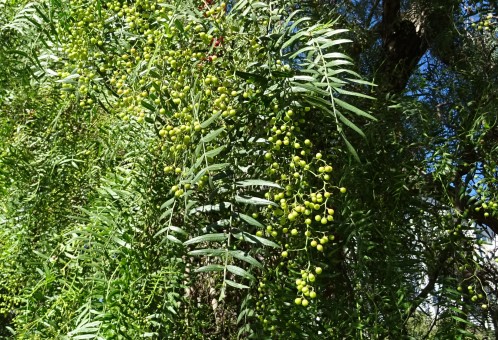What kind of hybrid plant color pepper is good? When will you plant it? When will you collect it? How do you plant it? (with greenhouse planting technology)
Colored pepper is one of the sweet peppers, which gets its name because of its various colors. It is rich in vitamins and trace elements. It has the effect of tonifying blood and promoting blood circulation, so many people like to eat it. What kind of colored pepper is good? When will you plant it? When will you collect it? How do you plant it?

Varieties that can be planted:
Select the greenhouse special varieties of unlimited growth type, at present, there are commonly used and mature varieties in production, such as Ousheng Chaomai red pepper, Ousheng Huang Yongzhen yellow pepper, purple pepper, white white pepper, orange pepper, after years of planting and selection in the greenhouse in the north, the greenhouse has strong adaptability, high yield potential, good quality and good coloring.
Planting time:
Seeds can be sown in all seasons, but it is suitable from mid-late July to late December. The disease of sowing too early is serious, and it is difficult to set up a high yield shelf when the light and temperature are good before the severe winter.
Harvest time:
After the color pepper fruit stops expanding and changing color, it should be harvested in time, requiring it to be harvested in the morning, and all the stalks should be harvested when harvesting, leaving no stalks in the axils of leaves.
Greenhouse planting technology:
1. Raising seedlings
The seeds of colored pepper are expensive, and the seedling raising period is long, and the winter seedling is in the low temperature and cold season, so it is easy to cause rotten seed, dead seedling and rigid seedling, so it is required to raise seedlings by heating and heat preservation seedbed and nutrition bag in the greenhouse.
Seedling substrate, using substances with strong diffusivity of fertilizer and water (such as peat, rotten leaf soil, etc.). Add 0.4% compound fertilizer, 1% common calcium, 0.01% carbendazim, fully mix and put into a plastic nutrition bag with a diameter of 8cm, pour through water and sow seeds.
2. Seed treatment
The seeds should be treated before sowing. After soaking the seeds in 55 ℃ warm water for 30 minutes, cover the seeds with clean gauze, keep the temperature during germination at 25 ℃, rinse and turn them with warm water every day, sow the seeds after the seeds are white, sow one seed in each nutrition bag, and cover the soil 0.5cm after sowing. The nutrition bag was placed on the seedling bed in the greenhouse and kept at 25: 30 ℃. After emergence, the seedlings were kept at 20: 30 ℃ during the day and 15: 18 ℃ at night. The seedlings were refined at low temperature for 7 days and 10 days before transplanting, about 20 ℃ in the day and 13 ℃ at night. The nutrition bag is watered according to the situation, and the substrate is dry and wet. During the 2-4 leaf stage, the combined watering can recover the compound fertilizer 2-3 times, each time 8-10 kg per mu, and 0.2% potassium dihydrogen phosphate is sprayed as foliar fertilizer every 3-4 days. Color pepper seedling stage to create a full light environment, seedlings in order to be strong.
3. Soil preparation and fertilization, standardized planting
Due to the slow root growth and poor regeneration ability of colored pepper, a deep, loose and fertile soil environment is needed. Before soil preparation, it is required to apply rotten farm manure 43.5 tons per mu, common calcium 40 kg, compound fertilizer 50 kg, potassium sulfate 50 kg, zinc sulfate and borax 4 kg each. Through deep turning into the soil layer, and then fine broken soil, fine soil preparation. After the land is leveled, the soil moisture surface is 1.1 meters wide and the ditch is required to be 40 centimeters wide and 30 centimeters deep. According to the double-row planting requirements of plant spacing of 40 cm to 45 cm and row spacing of 80 cm, 1500 to 1800 plants per mu should be transplanted after 3 o'clock in the afternoon, and the seedlings should be 1 cm lower than the soil surface, requiring large and small seedlings to be planted separately to facilitate management. Watering enough water for fixed roots is required within 3-5 days after transplanting to ensure survival. Pepper seedlings can be watered according to the dry and wet condition of the soil after survival. Within 15 days after transplanting, the side film on both sides of the greenhouse should be rolled up and ventilated in time after 9 o'clock in the morning to cool down, and the rolled side film should be put down and covered after 5 o'clock in the afternoon to ensure that the night temperature can meet the survival and rooting of hot pepper. The side film rolled up after 15 days does not need to be put down, in case of weather changes, when the temperature drops, it is necessary to strengthen heat preservation measures and no longer roll up the film on both sides of the greenhouse, resulting in a drop in the temperature in the shed, it is necessary to ensure that the temperature in the shed can not be lower than 10 ℃ to meet the needs of the growth and development of colored pepper.
4. Fertilizer and water management
Watering the plant properly after survival. When you first saw the first fruit, you began to water and fertilize. During the flowering and fruiting period, the soil should be kept moist and watered every 5-10 days according to the degree of dryness and wetness of the soil. When the temperature is low, it should be watered in the morning on a sunny day, and when the temperature is high, it should be watered in the evening. At seedling stage, topdressing seedling fertilizer, compound fertilizer or urea per mu is 5kg / mu, fruit fertilizer / mu is 20kg / mu, fertilizer / mu is 20kg / mu, then fertilizer is applied to water with 15kg / mu compound fertilizer every 20 days or so after that. In the middle and later stages of fruit harvest, 0.2% potassium dihydrogen phosphate plus 0.1% zinc sulfate was sprayed with foliar fertilizer every 7 days. Drying in the greenhouse and high temperature will affect the flowering and insemination of colored peppers, resulting in falling flowers, so we should pay attention to watering to cool and humidify. The relative water content of the soil is required to be kept at 60% and 70%.
5. Temperature management
The suitable temperature for the growth of colored pepper is 20: 25 ℃ during the day and 15: 20 ℃ at night. The temperature in the greenhouse is lower than 10 ℃, and it is difficult to pollinate when it is higher than 35 ℃, which is easy to cause flower and fruit drop. The air humidity requires 70%, the sun is sufficient at noon during the day, and the weather with high temperature requires covering the sunshade net to cool down. When the outside temperature rises, it is required to gradually increase the amount of ventilation in order to spend the summer safely.
6. Pruning and hanging vines
Two strong main branches were selected for each plant, the buds of door pepper and the basal lateral buds were wiped off in time, the pepper was retained from section 4 to 5, and the fruit of the main branch was mainly left, and then the side branch was erased in time, and the middle side branch could be coring after leaving 1 fruit. it is required that each plant should always keep 2 branches growing upward. Generally do not cultivate the soil, each main branch with a piece of anti-aging plastic rope hoisted and fixed.
7. Thinning flowers and fruits
The color pepper has a strong branching power, it is necessary to shoot before flowering, and the side branches should be knocked out in time. During the growth period, it is necessary to timely thinning flowers and fruits, leaving no door pepper, leaving fruit cross, leaving one fruit per branch, and beating the rest of the flowers and fruits to ensure that each plant can bear no more than 6 fruits at the same time, so as to facilitate the expansion of fruit. Remove the withered, old and diseased leaves in time to concentrate nutrients and improve lighting conditions.
8. Health care function
Because they are bred by genetic genes with different colors of anthocyanins, they have purple eggplant, golden yellow or orange-red skin. Colorful persimmon pepper is also rich in vitamin C and pepper alkaloids, which is hot in nature and has the functions of moderate temperature, heat dissipation, digestion and so on, which is helpful to enhance the immune function and improve the disease prevention ability of the human body. Among them, capsaicin can promote fat metabolism and prevent fat accumulation in the body, so as to lose weight and prevent disease.
9. Disease and pest control
The diseases of colored pepper are mainly virus disease, blight, powdery mildew and bacterial wilt. The virus disease can be prevented by spraying 500 times of 20% virus A wettable powder, and the epidemic disease can be controlled by root irrigation with 72.2% Prik or 50% nail cream copper. Powdery mildew was sprayed with 1000 times of Fenru Ning wettable powder or 2000 times of Shihuan, once every 7 days, even for 3 times. Ralstonia solanacearum was irrigated with 72% agricultural streptomycin 4000 times or with Bordeaux solution at the concentration of 0.5 ∶ 1 ∶ 100. The main pests of colored pepper are aphids, tobacco insects, whitefly, red spiders, thrips, etc., which can be sprayed with 10% imidacloprid, 1.8% avermectin, nisolan, kung fu and other pesticides.
Time: 2019-04-08 Click:
- Prev

When will the winter jujube saplings be planted? How many trees can be planted per mu? Which varieties are good?
Winter jujube generally matures naturally from October to November in the Gregorian calendar, and it is named because of the early cold weather in the north. So when will the winter jujube saplings be planted? How many trees can be planted per mu? Which varieties are good? Winter jujube saplings can be planted in autumn or spring. Autumn is planted after falling leaves to before closing winter.
- Next

What kind of crop is suitable to grow under the pepper tree? What kind of crops can be interplanted under the tree?
Zanthoxylum bungeanum, also known as big pepper, Qin pepper and Shu pepper, is a common plant in China. It is widely planted because it can be used as both seasoning and traditional Chinese medicine, but because young pepper is not suitable for successful planting, farmers will adopt interplanting mode to enhance soil fertility.
Related
- Fuxing push coffee new agricultural production and marketing class: lack of small-scale processing plants
- Jujube rice field leisure farm deep ploughing Yilan for five years to create a space for organic food and play
- Nongyu Farm-A trial of organic papaya for brave women with advanced technology
- Four points for attention in the prevention and control of diseases and insect pests of edible fungi
- How to add nutrient solution to Edible Fungi
- Is there any good way to control edible fungus mites?
- Open Inoculation Technology of Edible Fungi
- Is there any clever way to use fertilizer for edible fungus in winter?
- What agents are used to kill the pathogens of edible fungi in the mushroom shed?
- Rapid drying of Edible Fungi

